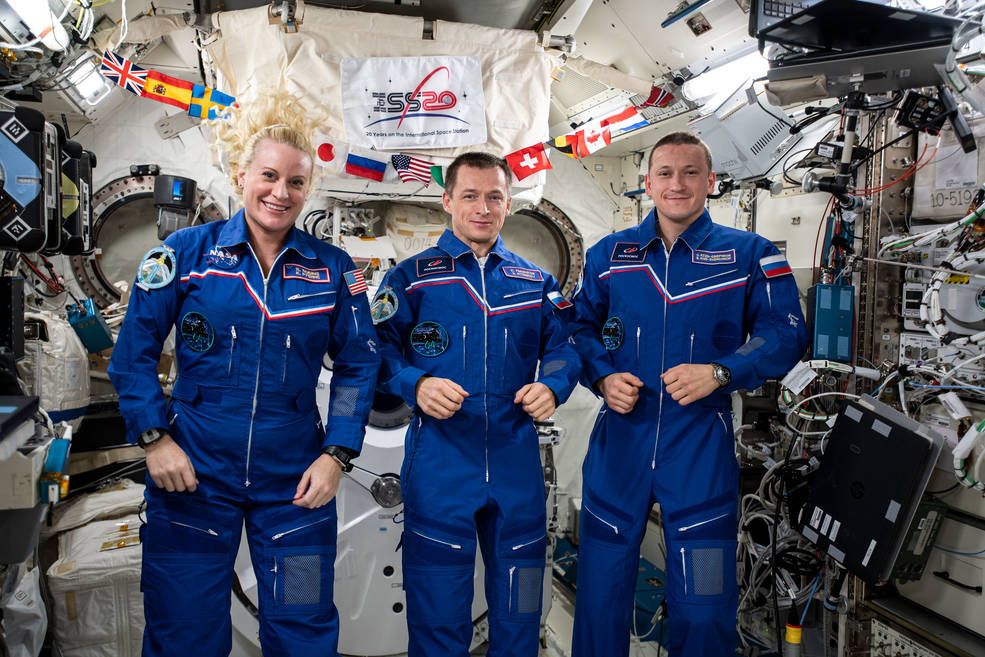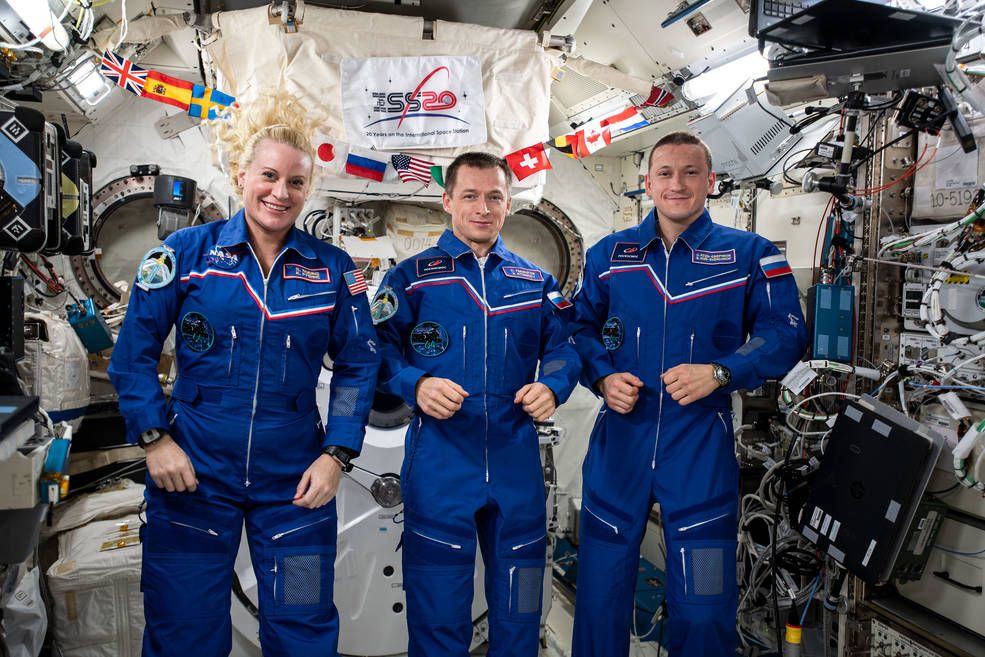
A NASA astronaut and two Russian cosmonauts will head back to Earth on a Soyuz spacecraft tonight (April 16), and you can watch the whole thing live online.
Expedition 64 flight engineer Kate Rubins will return home from the International Space Station alongside Roscosmos crewmates Sergey Ryzhikov and Sergey Kud-Sverchkov. You’ll be able to watch their landing events live here on Space.com and directly from NASA beginning at 5:45 p.m. EDT (2145 GMT).
If all goes to schedule, the crew will close the hatch of their Soyuz MS-17 vehicle around 6:10 p.m. EDT (2210 GMT), before undocking from the International Space Station’s Poisk module at 9:34 p.m. (0134 GMT on Saturday, April 17.)
Touchdown will take place on the steppes of Kazakhstan southeast of the small town of Dzhezkazgan on Saturday at 12:56 a.m. EDT (0456 GMT or 10:56 a.m. local time), according to the flight plan. From there, Rubins will fly back to NASA’s Johnson Space Center in Houston while the cosmonauts will go to their training facility in Star City, near Moscow.
NASA is pivoting toward crewed flights on commercial SpaceX and Boeing spacecraft, making Rubins’ return on Soyuz a rarer opportunity these days for agency astronauts. She is expected to clock 185 days on this mission, with 300 days of experience accrued overall across two space station missions. Ryzhikov is expected to have 358 cumulative days in space across two missions, while Kud-Sverchkov will complete his first mission.
The departing crew leaves behind a space station that received, during several spacewalks, key battery and strut upgrades in anticipation of putting in new solar arrays later this year. The ongoing power improvements are expected to help the ISS stay in good shape through its planned end of mission in 2024. The station’s mandate could be extended to 2028 or even further depending on NASA’s anticipated work with commercial space stations — along with international consensus on what to do.
Staying on board station will be an Expedition 65 crew of seven — larger than the usual six people, thanks to SpaceX’s Crew-1 mission, which carried four people aloft in November 2020 on the first operational commercial crew flight, compared with the usual three seats a Soyuz can hold.
Those remaining crew members include space station commander and NASA astronaut Shannon Walker, a trio of fellow NASA astronauts (Victor Glover, Michael Hopkins, and Mark Vande Hei — who flew to space last-minute on a Soyuz recently, under an exchange agreement), two cosmonauts (Oleg Novitskiy and Pyotr Dubrov) and Soichi Noguchi, an astronaut with the Japan Aerospace Exploration Agency (JAXA).
On April 22, SpaceX and NASA plan to send another four crew members on a Crew Dragon spacecraft to join Expedition 65. The new arrivals on the Crew-2 mission will be NASA astronauts Shane Kimbrough and Megan McArthur, JAXA astronaut Akihiko Hoshide, and ESA (European Space Agency) astronaut Thomas Pesquet.
Commercial crew is still a young program, and NASA is trying to fill its flight obligations with only one of the two planned United States spacecraft. Boeing is still working on completing the requirements to fly astronauts on its CST-100 Starliner capsule following an uncrewed mission in 2019 that encountered several glitches and never reached the ISS as planned.
Bad weather and technical problems delayed a second Starliner test attempt, but Boeing is now working with NASA to get that flight done. One of the main issues now is that there are many ISS vehicle launches and landings in the coming months, so Starliner may not fly until late July or early August. Those results then need to be reviewed before giving the thumbs-up for carrying people. Given that crowded schedule, it’s now thought astronauts may not climb aboard Starliner until 2022, according to Ars Technica.
Follow Elizabeth Howell on Twitter @howellspace. Follow us on Twitter @Spacedotcom and on Facebook.



